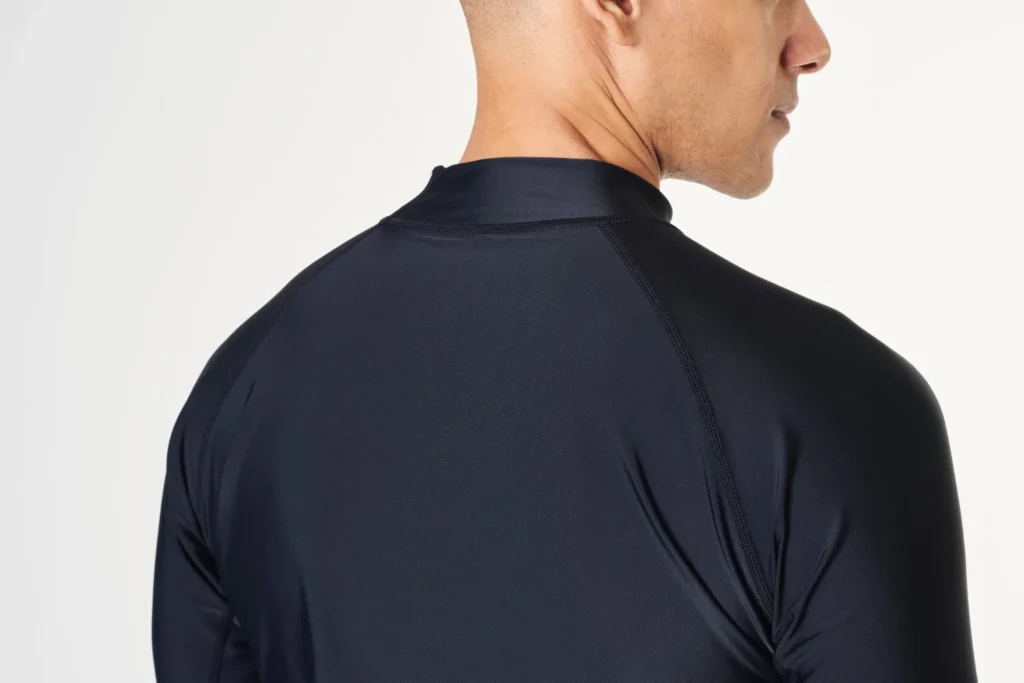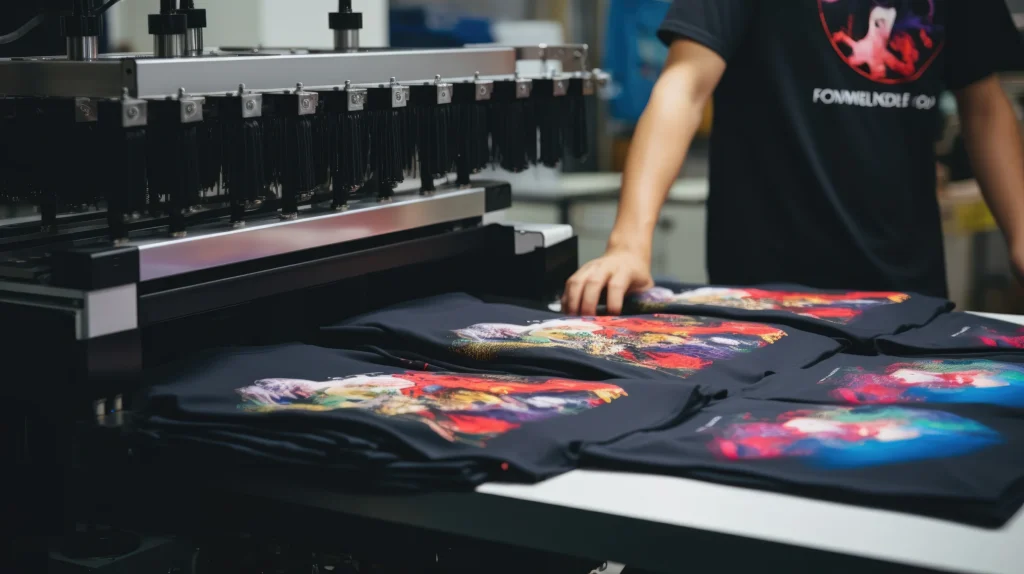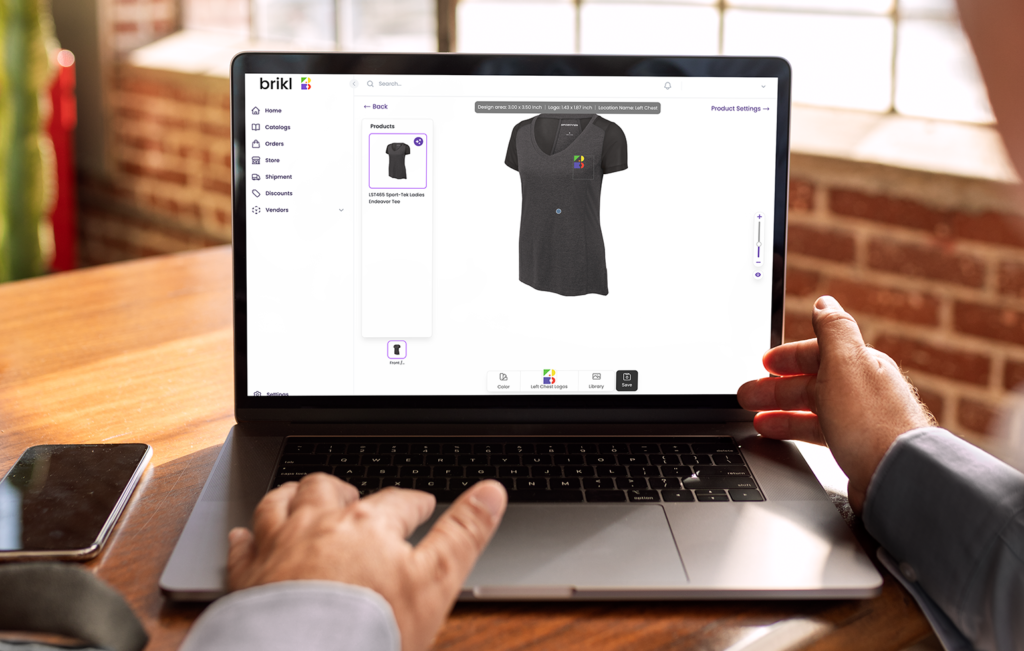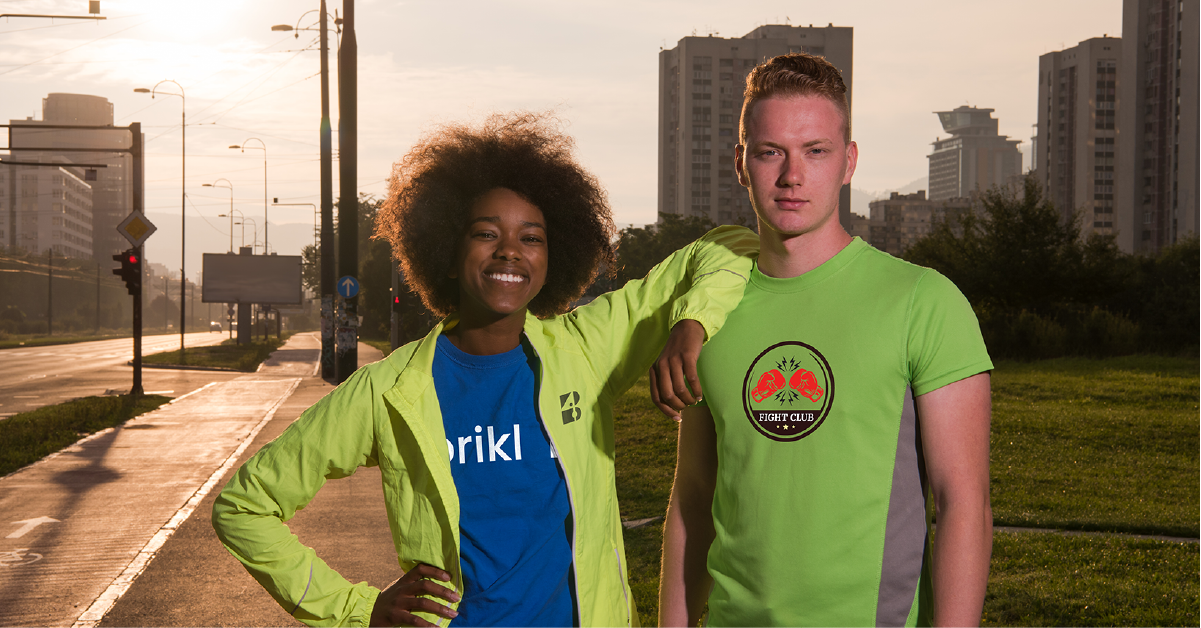Polyester is an essential fabric in the textile and promotional products industry, popular for its durability, vibrant color retention, and affordability. If you’re wondering, does polyester stretch, the answer isn’t straightforward; it depends on the type of polyester and its composition.
Generally, pure polyester is naturally resistant to stretching. However, through innovative blending with materials like spandex or by using certain weaves, polyester can achieve the flexibility needed for sportswear, activewear, and various custom merchandise applications.
This short guide will take you through the characteristics of polyester, the science behind its resistance to stretch, the best decoration methods for polyester, and tips for caring for polyester fabrics. Understanding these aspects will help you make informed choices when selecting polyester for custom merchandise, allowing you to better meet customer expectations in a competitive marketplace.
The Science Behind Polyester's Stretch and Durability
Polyester is a synthetic fabric derived from polyethylene terephthalate (PET), a form of plastic. This structure gives it unique characteristics such as resilience, quick-drying capabilities, and resistance to shrinking and stretching. Unlike natural fibers like cotton, polyester is hydrophobic, which means it repels water and dries quickly, making it ideal for activewear and outdoor gear.

However, polyester’s default state is relatively rigid compared to natural fibers. This rigidity means that pure polyester won’t stretch significantly, making it ideal for products where shape retention is essential. However, flexibility can be enhanced in polyester fabrics by blending them with materials like spandex or using specific weaves like interlock and jersey, which introduce more elasticity.
Does Polyester Stretch? Clarifying the Myths
A common misconception is that polyester inherently stretches like elastic fibers. While polyester does possess some flexibility, it’s not universally elastic. The stretch properties of polyester vary significantly depending on the construction, such as the weave and any additional fibers in the blend.
For instance, a 100% polyester fabric will have limited stretch, though certain weaves like interlock or jersey can improve flexibility. By contrast, polyester blends with spandex or elastane have a much higher elasticity. This is why products like athletic wear often use polyester-spandex blends, providing comfort and movement while maintaining durability. For businesses, understanding the structure of polyester and the implications of different blends is crucial for selecting the best fabric for various applications.
Benefits of Polyester Stretch in Custom Merchandise
Polyester stretch fabrics have become a favorite in the promotional industry due to their versatility, durability, and performance. Here are the primary benefits:
- Flexibility and Comfort: Polyester with added stretch (typically through spandex blends) fits a variety of body shapes and allows for a greater range of motion, which is essential for athletic wear, uniforms, and casual clothing.
- Durability: Polyester is known for its resilience. It resists pilling, fading, and shrinking, ensuring that custom merchandise retains its appearance and quality over time, even after repeated washing and wearing.
- Quick-Drying and Moisture-Wicking: Polyester’s hydrophobic nature means it dries quickly and wicks moisture away from the skin, making it comfortable for activewear and team merchandise.
- Wide Range of Colors and Styles: Polyester is easy to dye and holds color vibrantly, allowing brands to create eye-catching designs that stay bright over time.
For businesses, these attributes of polyester stretch fabrics mean that custom merchandise can be comfortable, durable, and visually appealing, which can lead to greater customer satisfaction and loyalty.
How Brikl Can Help You Source the Best Products
How Brikl Can Help You Source the Best Products

Brikl is designed to help businesses expand their merchandise offerings, including options with polyester stretch. With Brikl, you can source from top suppliers, and design, test, and sell custom products without managing physical inventory. This allows you to meet demand more flexibly and efficiently. Our user-friendly tools also streamline the customization process and decorate through the largest decorator network in the industry, enabling you to quickly create high-quality, personalized merchandise.
Capitalize on the growing trend for custom apparel, including polyester stretch options, without the logistical burden of traditional inventory management. Experiment with different designs, including stretch-enhanced polyester products, and gather insights into customer preferences to refine their product lines accordingly.
Best Decoration Methods for Polyester
Polyester’s synthetic nature requires careful selection of decoration methods for optimal results. The two most suitable options for polyester decoration are Direct-to-Film (DTF) printing and screen printing, though other methods like embroidery may also be appropriate depending on the product.
1. Direct-to-Film (DTF) Printing

DTF printing is highly effective for polyester fabrics because it is designed to adhere well to synthetic materials. The process involves printing the design on a film, which is then heat-transferred onto the fabric. DTF works particularly well on polyester, as the heat-transfer method ensures vibrant colors and long-lasting durability without dullness or fading. It’s also resistant to issues like dye migration, where the heat applied during decoration causes the dye in polyester to bleed into the printed image, a common problem with other methods.
2. Direct-to-Garment (DTG) Printing
While DTG printing is popular for custom apparel, it is less effective on polyester compared to natural fibers. DTG uses water-based inks that don’t bond as effectively with polyester, leading to dull colors and shorter-lasting prints. However, some specific DTG techniques and pretreatments are being developed to improve DTG results on polyester, so it’s worth keeping an eye on advancements in this area.
3. Screen Printing and Embroidery

Screen printing works well for polyester, especially for simpler designs with fewer colors, as it can adhere securely to the fabric without as much risk of dye migration. Embroidery can also be a good choice for polyester, but it requires stabilizers to prevent puckering due to the fabric’s synthetic structure.
Choosing the Right Polyester for Your Products
When selecting polyester for your custom merchandise, consider the following factors to match the fabric’s properties with the intended use:
1. Stretchability
For activewear or any apparel that requires movement, polyester blends with spandex or elastane provide the best results. This added elasticity allows the fabric to stretch comfortably while retaining its shape.
2. Fabric Weight
Lightweight polyester is excellent for T-shirts, while heavier options can add structure to hoodies and jackets. The choice of weight depends on the type of apparel and the intended environment of use.
3. Finish
Polyester can have various finishes depending on its use. A moisture-wicking finish is ideal for sports apparel, while a brushed finish offers a softer touch, making it suitable for casual wear.
4. Environmental Impact
For eco-conscious brands, consider using recycled polyester. This option supports sustainability by repurposing existing plastic materials into new garments, aligning with environmental goals and appealing to environmentally-aware customers.
How to Care for Polyester Fabrics
Proper care is essential to maintain polyester’s durability and appearance. Here are some guidelines:
- Washing: Machine-wash polyester in cold water on a gentle cycle. Avoid bleach, as it can weaken the fibers.
- Drying: Tumble dry on low heat or air dry. High temperatures can shrink polyester and damage its elasticity.
- Ironing: If needed, use a low-heat setting and place a pressing cloth over the fabric to avoid scorching.
- Stain Removal: For stubborn stains, use a mild detergent or spot cleaner safe for synthetic fibers.
Following these care instructions will help ensure that polyester merchandise maintains its quality, allowing customers to enjoy long-lasting apparel that represents your brand.
Enhancing Your Product Line with Polyester Stretch
Adding polyester stretch options to your product line can enhance its versatility and appeal, especially in activewear, sports team uniforms, and casual apparel. Stretch-enhanced polyester fabrics allow for greater freedom of movement, meeting today’s demand for comfort and performance. By understanding polyester’s stretch properties, businesses can provide customers with merchandise that fits well, holds up over time, and meets various activity needs.
Polyester stretch also offers other benefits that appeal to consumers, such as moisture-wicking capabilities and quick-drying properties, making it ideal for activewear and outdoor products. These features contribute to customer satisfaction and encourage repeat purchases, strengthening brand loyalty.
Making Informed Decisions on Polyester Stretch

Understanding how polyester stretch works is crucial for businesses looking to elevate their product offerings. Recognizing that not all polyester is created equal allows businesses to select the right blend for each application, enhancing both comfort and performance. Brikl’s platform provides an efficient solution for testing and launching custom merchandise, making it easy to incorporate adaptable polyester options that meet the demands of a diverse market.
So, does polyester stretch? The answer is yes, but the degree of stretch depends on its weave, blend, and construction. For businesses, selecting the right type of polyester and leveraging Brikl’s customization capabilities can lead to higher-quality products that satisfy customer expectations and build brand reputation in an increasingly competitive market.





